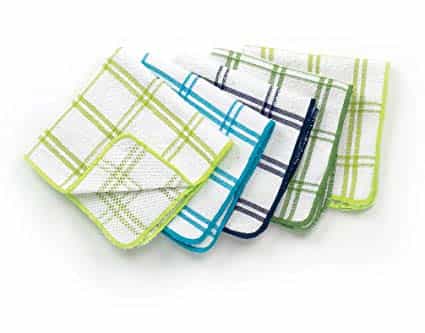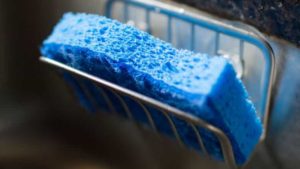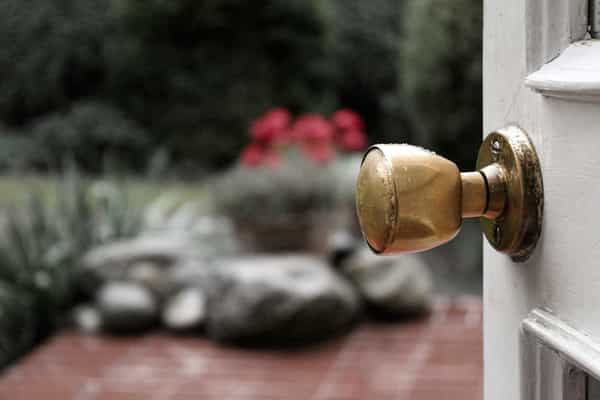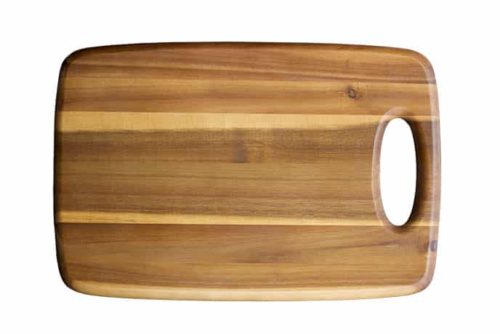If you’re fastidious about kitchen hygiene, you may think that you know everything there is to know about getting rid of the germs that lurk near food preparation areas. However, the truth is that even people who regularly subject their kitchen to a thorough cleaning may be missing key sources of bacteria. Here are seven items that are surprisingly likely to harbor germs, along with advice about preventing bacteria buildup in each area.
1. The kitchen sink faucet

Although your kitchen faucet may look shiny and clean at first glance, the aeration screen attracts huge amounts of bacteria. Regular use of the faucet ensures that the screen stays wet, and bacteria colonies will thrive in such damp conditions. In addition, many people graze the screen with dirty dishes when rinsing them, or just touch the aeration screen when washing hands and these common acts transfer even more bacteria to the area. When bacteria grow on the faucet, it eventually creates a sticky biofilm that can end up in your meals or drinks. To combat this problem, remove the aeration screen on a weekly basis and clean it by soaking it in a mix of water and white wine vinegar.
2. Dishtowel

Dish towels are there to help you keep your kitchen clean and tidy, but most of them end up covered in germs. For example, one study on kitchen cleanliness found that 6-7% of all tested kitchen towels were positive for MRSA, the infamous Staphylococcus bacteria that can cause potentially fatal skin infections. Many dish towels also tested positive for E. coli, which can cause gastric upsets. You can help to reduce the number of bacteria on your kitchen towels by using disposable paper towels to wipe up liquid spills, reserving the dish towel for drying clean dishes. However, even if you follow those instructions, you should still wash your dish towels in hot water twice a week.
3. Your dish sponge

Lots of dish sponges come in attractive, bright colors, but in spite of their innocent appearance, they are actually some of the dirtiest objects in the home. Numerous studies have proven that most dish sponges are host to millions of bacteria, and the data even shows that these sponges are filthier than the average toilet. One smart trick for tackling dish sponge grime involves microwaving your dish sponge for one and a half to two minutes, which typically leaves just 1% of bacteria behind. However, since dish sponges are so affordable, it might be easier to simply commit to replacing them several times a week.
4. Forgotten knobs and handles

It’s easy to ignore the dials on your stove or the handle on your kettle, but if you fail to clean these spots then they become a breeding ground for germs. You touch them often when cooking and they regularly end up greasy, so make sure you use an antibacterial cleaning solution to combat bacteria growth. If you encounter stubborn residue, steel wool can help you remove all lingering traces of food and grime.
5. The refrigerator seal

Cleaning the inside of your fridge is a good way to prevent your food from being contaminated, but you need to pay even more attention to the seal around your fridge. One shocking study that tested over 150 homes in the US found that more than 80% of fridge seals were harboring common molds. If there is mold on your fridge seal, it is possible for the mold to spread to some of your food or to trigger allergic reactions. To ensure that your fridge is adequately clean, wipe the seal with disinfectant at least once a week.
6. Cutting boards

Cutting boards are extremely helpful, but they’re also very attractive to bacteria. If your board is porous, it is particularly easy for bacteria to lodge and reproduce on its surface. You should be especially concerned about cutting board cleanliness if you often use the board to chop meat, which is often rife with E. coli and Salmonella. To combat these risks, always wash your chopping board before and after use, and store it on its side to discourage the accumulation of moisture. It’s also worth considering a glass board or one made of polypropylene, as these surfaces are less porous than wood.
7. The vegetable drawer in your refrigerator

Finally, you might think that the vegetable drawer in your fridge is not as dirty as the meat drawer, but vegetables bring dozens of potentially dangerous organisms into your home. Carrots, lettuce, cucumber, and all of your other favorite vegetables often come with Salmonella, yeasts, and molds. As a result, the vegetable drawer should be cleaned every three to four weeks using hot water and detergent. However, be careful to let the entire surface dry before you put the drawer back in the fridge.
Read More:- 9 Budget-Friendly Tips To Have A Successful Kitchen Renovation























